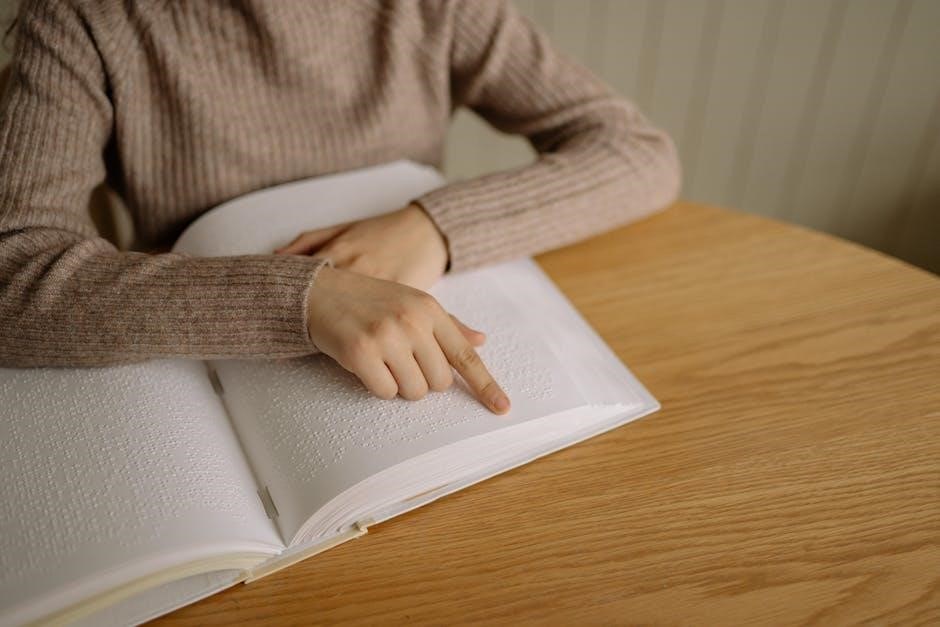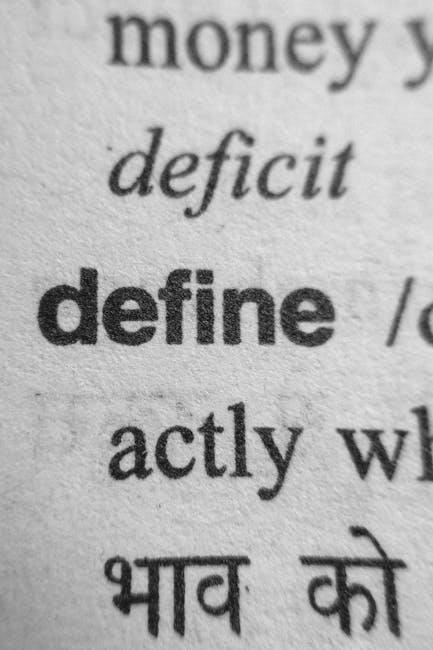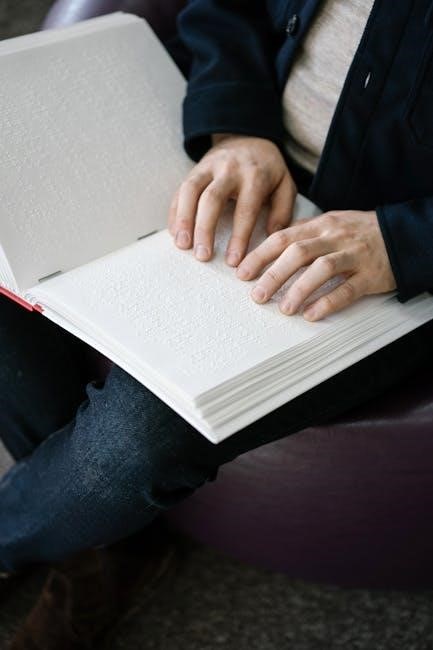the definitive book on body language pdf
The Definitive Book of Body Language by Allan and Barbara Pease is an international bestseller; It explores nonverbal cues, revealing true feelings and intentions through gestures, postures, and facial expressions, offering insights to enhance confidence and communication skills.
Overview of the Book and Its Authors
The Definitive Book of Body Language is authored by Allan and Barbara Pease, renowned experts in human relations and nonverbal communication. With over 20 million books sold worldwide, their work has become a benchmark in understanding body language. The book provides a detailed exploration of nonverbal cues, such as gestures, postures, and facial expressions, offering insights into how these signals reveal true emotions and intentions. Allan Pease, a well-known speaker and researcher, brings humor and practical examples to make the content accessible and engaging. Barbara Pease complements this with her expertise in human behavior, ensuring a comprehensive understanding of body language across cultures and contexts. Together, they deliver a guide that isolates and examines each component of body language, making it an invaluable resource for improving personal and professional interactions.
The Importance of Body Language in Nonverbal Communication
Body language plays a crucial role in nonverbal communication, often conveying emotions and intentions more effectively than words. It is a universal language, transcending cultural barriers, and is fundamental to understanding human behavior. Research indicates that nonverbal cues, such as facial expressions, gestures, and postures, account for a significant portion of how messages are perceived. In The Definitive Book of Body Language, Allan and Barbara Pease emphasize that these signals often reveal true feelings, sometimes contradicting verbal statements. Mastering body language enhances interpersonal relationships, builds trust, and improves professional interactions. By recognizing and interpreting these cues, individuals can gain insights into others’ thoughts and emotions, fostering clearer and more effective communication. This understanding is essential in both personal and professional settings, making body language a vital component of human connection and interaction.
Key Concepts Covered in the Book
The Definitive Book of Body Language delves into the core aspects of nonverbal communication, offering insights into gestures, facial expressions, and postures. It explores how body language reveals true emotions and intentions, often unconsciously. The book covers the science behind body language, including proxemics, kinesics, and haptics, explaining how these elements influence interactions. Readers learn to decode hidden meanings in movements and postures, understanding how cultural differences shape nonverbal cues. Practical advice is provided on improving self-awareness and communication skills, enabling individuals to project confidence and authenticity. The Peases also discuss the role of eye contact, mirroring, and open vs. closed body positions in building rapport. By examining real-life scenarios, the book bridges theory with application, making it a comprehensive guide for enhancing personal and professional relationships through better understanding of body language.
Understanding Body Language Basics
The Definitive Book of Body Language explains how nonverbal cues like gestures, postures, and facial expressions reveal emotions and intentions, often unconsciously, shaping human communication and interactions.
Nonverbal Cues and Their Role in Communication
Nonverbal cues, as explored in The Definitive Book of Body Language, play a crucial role in communication. These include gestures, facial expressions, postures, and eye contact, which often convey emotions and intentions more effectively than words. Allan and Barbara Pease highlight that these cues can reveal hidden meanings, sometimes contrasting with verbal statements. Understanding these signals is essential for interpreting others’ true feelings and improving interpersonal interactions. The book emphasizes that body language is a powerful tool in both personal and professional settings, offering insights into how to decode and utilize nonverbal communication effectively.
How to Read and Interpret Body Language Signals
Mastering the art of reading and interpreting body language signals is a key focus of The Definitive Book of Body Language. Allan and Barbara Pease provide practical insights into decoding gestures, postures, and facial expressions. They emphasize that understanding these signals requires observing clusters of behaviors rather than isolated cues. For instance, crossed arms may indicate defensiveness, while consistent eye contact can signal trust. The book highlights the importance of context in interpretation, as cultural and personal differences can influence meanings. Readers learn to identify subconscious patterns, such as micro-expressions, which reveal true emotions. By combining observation skills with awareness of these cues, individuals can enhance their ability to communicate effectively. The authors’ expertise offers a comprehensive guide to interpreting body language, empowering readers to navigate social and professional interactions with confidence and precision;
The Science Behind Body Language and Human Behavior
The Definitive Book of Body Language delves into the science behind nonverbal communication, explaining how body language is deeply rooted in biology and psychology. Allan and Barbara Pease reveal that many gestures and postures are subconscious, often reflecting true emotions more accurately than words. The book explores how these signals are universal, shaped by evolution, and influenced by cultural and personal experiences. By understanding the brain’s role in processing nonverbal cues, readers gain insight into why certain behaviors are instinctive. The authors also discuss how body language can be consciously controlled to project confidence and authenticity. This scientific approach provides a solid foundation for mastering body language, enabling readers to decode hidden meanings and improve their interactions. The book bridges the gap between theory and practice, offering a comprehensive guide to understanding human behavior through body language.

Advanced Techniques for Mastering Body Language
Advanced techniques in The Definitive Book of Body Language include decoding subtle gestures, mirroring, and controlling subconscious signals. These methods help readers project confidence and interpret hidden meanings effectively in real-life interactions.
Practical Tips for Improving Your Body Language Skills
The Definitive Book of Body Language offers actionable advice to enhance your nonverbal communication. Start by becoming aware of your own body language, ensuring your gestures align with your words. Practice open and approachable postures, such as uncrossing your arms and standing tall, to build trust. Make eye contact strategically to convey confidence without intimidating others. Smile genuinely, as it signals friendliness and openness. Learn to mirror others’ body language subtly to create rapport. Avoid fidgeting or nervous habits that may undermine your message. Pay attention to facial expressions, as they often reveal true emotions. Finally, practice mindfulness to control subconscious signals, ensuring your body language reflects your intended communication. These tips, combined with the book’s insights, empower you to master body language and improve both personal and professional interactions effectively.

Decoding Hidden Meanings in Gestures and Postures
The Definitive Book of Body Language provides a comprehensive guide to understanding the subtle cues embedded in gestures and postures. Open gestures, such as uncrossed arms, often signal honesty and receptiveness, while crossed arms may indicate defensiveness or discomfort. Eye contact is a powerful tool, with direct gazes conveying confidence and trust, while avoidance can suggest dishonesty or nervousness. Hand movements, like palm-up gestures, can express openness, whereas clenched fists may reveal tension or aggression. Posture plays a significant role too; slouching can imply lack of confidence, while standing tall projects authority and self-assurance. The book also highlights cultural differences in interpreting gestures, emphasizing the importance of context. By mastering these cues, readers can better decode unspoken messages and navigate social and professional interactions with greater insight and effectiveness, ultimately enhancing their communication skills.

The Role of Body Language in Professional and Personal Relationships
The Definitive Book of Body Language highlights how nonverbal cues shape professional success and personal connections. Positive body language fosters trust, respect, and rapport, while negative cues can undermine relationships and opportunities.
Body Language in Leadership and Workplace Communication
The Definitive Book of Body Language emphasizes the critical role of nonverbal cues in leadership and workplace dynamics. Leaders who exhibit open, confident body language, such as uncrossed arms or maintaining eye contact, foster trust and authority. Conversely, negative gestures like crossing legs or avoiding eye contact can signal weakness or dishonesty. In workplace communication, body language often conveys attitudes toward ideas, projects, and colleagues, influencing collaboration and decision-making. The book offers practical insights into how leaders can use positive body language to inspire teams, build rapport, and create a productive work environment. By mastering these nonverbal signals, professionals can enhance their influence and achieve greater success in their roles.
Using Body Language to Build Trust and Rapport
The Definitive Book of Body Language highlights the importance of nonverbal cues in establishing trust and rapport. Mirroring others’ gestures, maintaining appropriate eye contact, and adopting open postures are key strategies. Smiling and leaning forward show engagement and interest, fostering connection. Consistency between verbal and nonverbal messages is crucial to avoid mixed signals. The book also explores cultural differences in body language, emphasizing adaptability. By aligning body language with genuine intentions, individuals can build strong, trusting relationships both personally and professionally. These techniques, as outlined in the book, empower readers to communicate more effectively and foster deeper connections.
The Definitive Book of Body Language equips readers with invaluable insights into nonverbal communication, offering practical tools to enhance personal and professional interactions. Its wisdom fosters confidence and understanding, making it an essential guide for mastering body language effectively in everyday life.

The Impact of “The Definitive Book of Body Language” on Readers
The Definitive Book of Body Language has profoundly impacted readers by empowering them with the ability to decode and apply nonverbal communication skills. Allan and Barbara Pease’s expertise, combined with their engaging writing style, has made the book an invaluable resource for millions worldwide. Readers have reported enhanced confidence in personal and professional interactions, as the book provides practical insights into understanding others’ intentions and emotions. Its humor and scientific approach make complex concepts accessible, ensuring that readers can immediately apply the knowledge in real-life scenarios. The book’s ability to bridge the gap between theory and practice has made it a favorite among professionals and everyday learners alike, fostering better relationships and clearer communication. Its impact lies in its transformative potential, helping readers navigate social and workplace dynamics with greater ease and effectiveness. This guide remains a timeless tool for mastering the art of body language.
How to Apply the Knowledge in Everyday Life
Readers of The Definitive Book of Body Language can apply its insights to enhance their personal and professional lives. By understanding nonverbal cues, individuals can improve communication, build trust, and interpret others’ intentions more accurately. The book offers practical tips for mastering body language, such as mirroring gestures to establish rapport or using open postures to convey confidence. In professional settings, these skills can help leaders inspire teams, negotiate effectively, and resolve conflicts. At home, improved nonverbal awareness fosters deeper connections with family and friends. The Peases’ guide also emphasizes the importance of cultural sensitivity, as body language varies across regions, helping readers navigate global interactions with ease. By integrating these strategies, individuals can become more persuasive, empathetic, and effective in their daily interactions. This practical wisdom makes the book an essential tool for anyone seeking to refine their communication skills and advance their personal and professional goals.